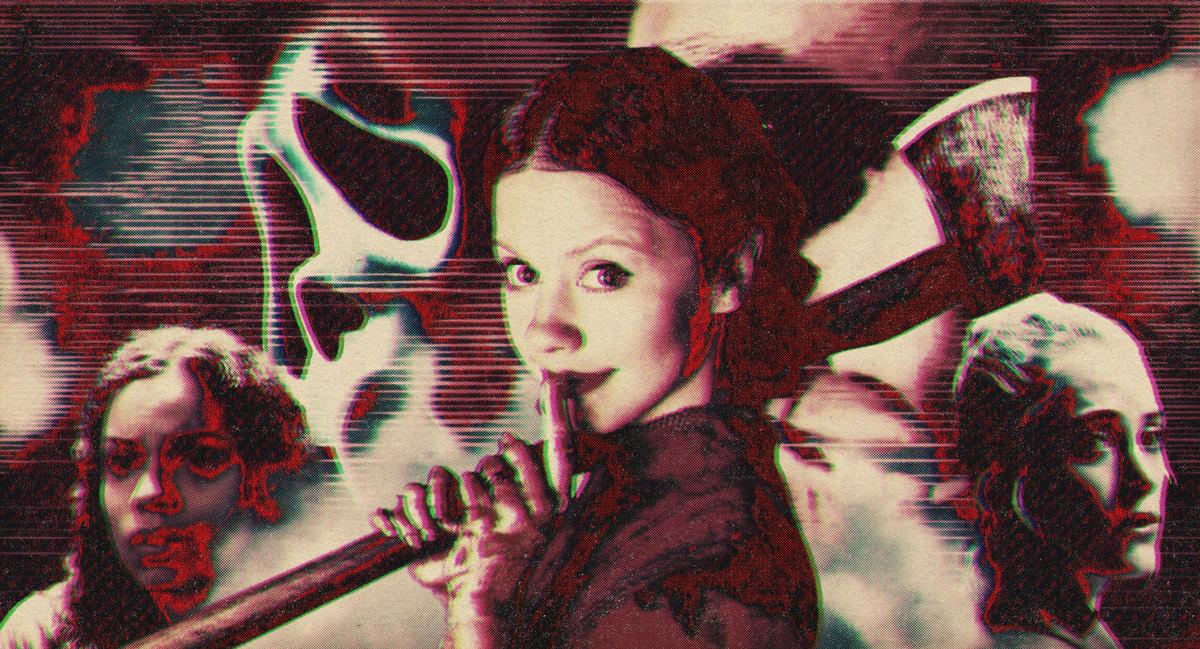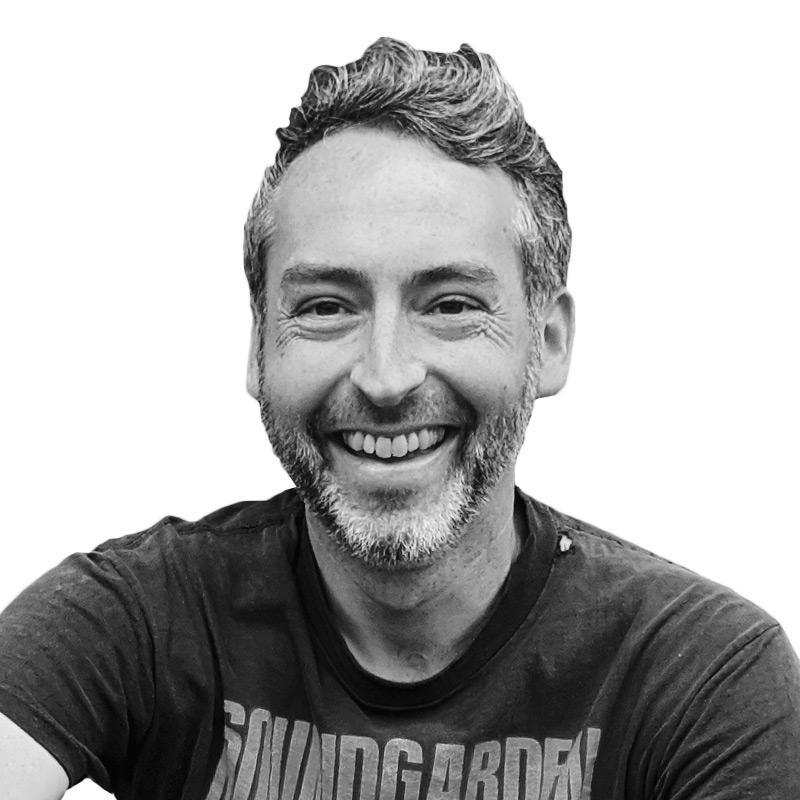A Scary Good Year
In 2022, people flocked to theaters to see two things: franchise blockbusters and horror movies. As the box office totals for the latter continue to pile up, directors Ti West, Zach Cregger, Parker Finn, and more reflect on the genre’s boom.INTERIOR GARAGE—LATE AT NIGHT
Zach Cregger, 37, one of the Whitest Kids U’ Know, sits down at his desk. A glowing bulb fills the makeshift home office with eerie red light. Menacing music plays on his speakers. He looks around the room.
Ambient dread.
It’s a setup straight out of a horror movie: A writer scares himself into conjuring something terrifying. Then it actually comes to life. That was what happened one evening four years ago when Zach Cregger was in his Los Angeles home dreaming up the premise of what became Barbarian. “I just wanted to write a scene where I could load as many little tiny microaggressions and red flags in one interaction between a man and a woman as possible,” Cregger says. “So I thought of a double-booked Airbnb, and I was just like, ‘Let’s go.’ And it was really just for me, for fun. It was the way a kid colors with crayons. I was just like, ‘I don’t know where this is going. Beyond the page that I’m on, anything can happen.’”
And though the script begins with a rental gone wrong, thanks to a cleverly jarring narrative flip, the story ends up in a completely unexpected place. “It’s like Stephen King says: ‘As a writer, you’re a paleontologist,’” Cregger explains. “And you’re unearthing a dinosaur skeleton, one bone at a time, and you don’t know what the dinosaur is until you’re done. And so I just came at it that way of ‘Let’s let the story tell me.’”
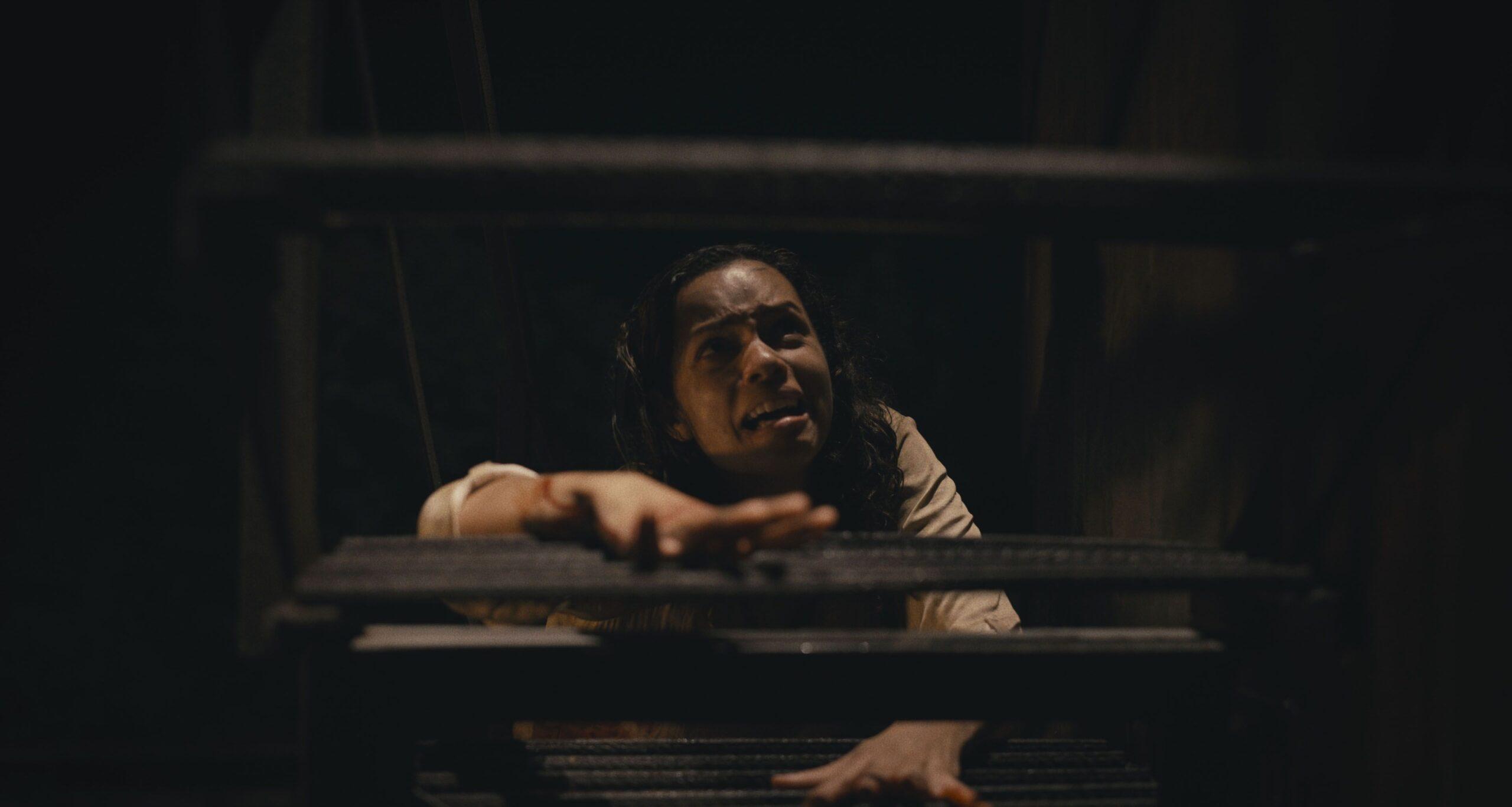
Released in September, Cregger’s $4.5 million flick gradually built an audience from online buzz and positive reviews. Before hitting HBO Max in late October, it had earned more than $40 million at the box office—and ended up pulling in $45.4 million total. Vanity Fair called it “2022’s Surprise Success.”
But the success of Barbarian isn’t that surprising if you’ve been paying attention. In 2022, crowds flocked to the theaters to see two things: franchise blockbusters and scary movies. In a desert of superheroes, big-budget sequels, video game adaptations, and animated films, horror was an oasis of originality that people desperately wanted to visit. Domestically, the second- and third-highest-grossing original live-action American studio movies this year were Jordan Peele’s Nope ($123.3 million) and Parker Finn’s Smile ($105.9 million), behind only Baz Luhrmann’s biopic Elvis. Worldwide, Smile finished second ($216.1 million), and Nope finished fifth ($171.2 million).
But go just a little further down the list, and horror’s rampant success in 2022 is even more apparent. The Black Phone ($161.2 million globally), The Menu ($61.3 million), Violent Night ($55.1 million), Prey for the Devil ($42.9 million), and Pearl and X ($24.2 million combined) were all hits relative to their budgets. And not included in that group are the rebooted Scream ($140 million) and the final (maybe?) installment of the Michael Myers saga, Halloween Ends ($104.2 million). Getting scared, it turns out, is better as a shared activity in the dark. And these days, more and more filmmakers are happy to answer the demand.
“I think the best horror explores the human condition,” says Finn. “It is terrifying just being a human being walking around in the world.”
Part 1: “Horror or What Else?”
Part of the appeal of modern horror is that it’s cinema’s most aesthetically diverse genre. But no matter what a scary movie is about—a psychiatrist investigating a string of people who unleash ghastly grins before killing themselves (Smile), someone trying to escape three monsters in an Airbnb (Barbarian), the origin and end of an unfairly repressed spouse who violently takes her pain out on both strangers and those she loves across generations (X and Pearl), an American expat in Bucharest who can’t convince anyone that she’s really being stalked by a serial killer (Watcher), or small-town teenagers sucked back into a meta slasher story (Scream)—they have one thing in common: They’re best enjoyed communally.
Zach Cregger (writer-director, Barbarian): The energy of being afraid in a crowd, it elevates the experience for whatever reason. I think that’s a beautiful thing that people still believe in.
Chloe Okuno (writer-director, Watcher): There’s something so immediate and universal about fear and something both comforting and amplifying about experiencing that with other people. The energy really feeds off of each other in terms of how tense things get, but also then in terms of the relief that you get after a jump scare.
Parker Finn (writer-director, Smile): When you hear your friends saying, “This is really scary, you should go see it,” there’s something really fun about being part of a moment. When I hear that something’s really scary, I get really excited to go and test it out.
Tyler Gillett (codirector, Scream): We’ve all collectively lived through a pretty fucked-up thing recently. Having a shared experience, that’s a big part of it. But there’s also a lot of weird, dark shit that we’re processing as a culture, as a species.
Matt Bettinelli-Olpin (codirector, Scream): It’s one of the last genres that we’re getting original stories in. And I know I say that as the guys who made Scream 5, but minus our movie, you get original movies and original stories in the way I think we all grew up with. It’s always attractive to be like, “I can go get a fresh, original story that has nothing to do with anything else.” … Go see Scream 6 next year.
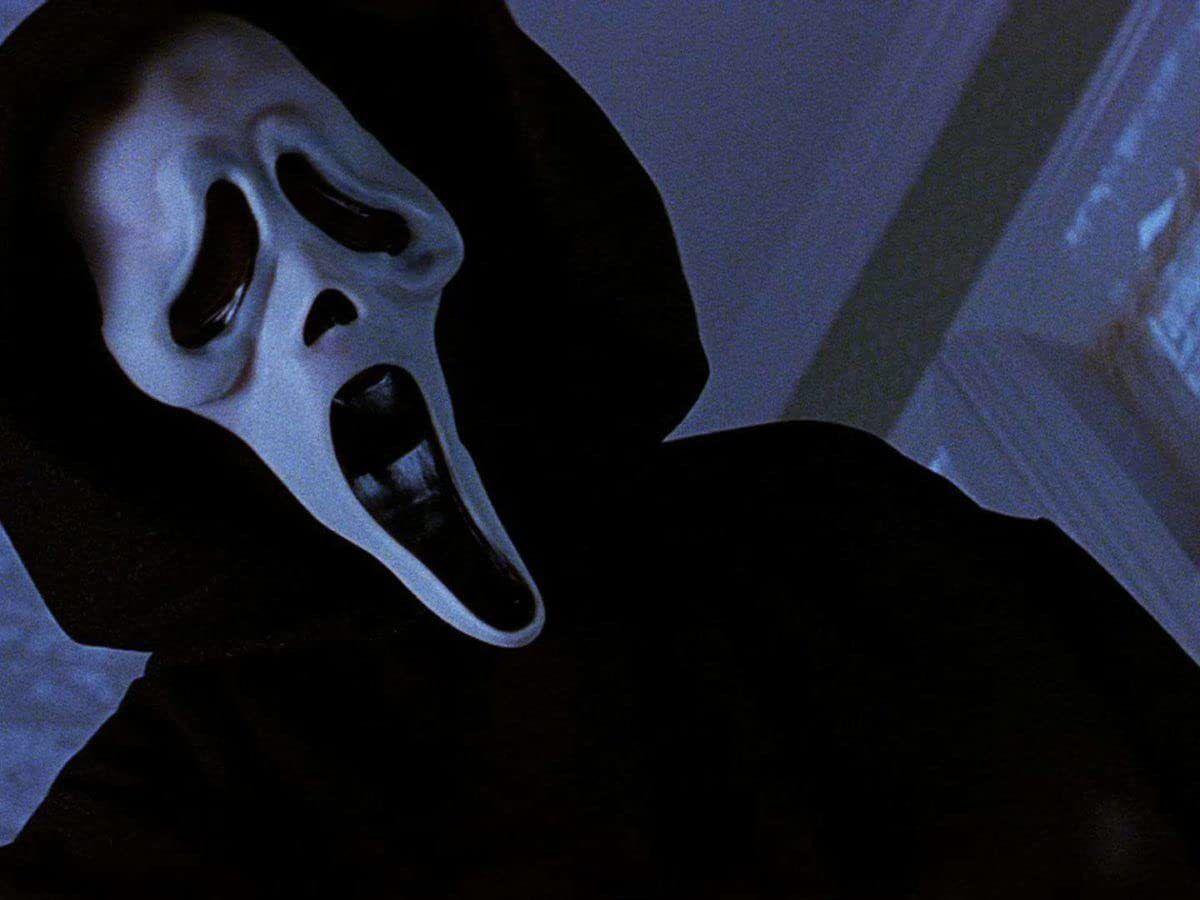
Ti West (writer-director, X and Pearl): I don’t know how much originality is what makes audiences go. I’d like to think it is a lot, but I’m not sure if that’s true. I just think it’s a genre that can provide a good night out at the movies. Young people now are not in a hurry to go to the movies to see All the President’s Men. They just aren’t. And you could look at that by all of these very good movies that have come out this year that have underperformed. The movies are terrific, but there’s so much content at home now, it’s hard to get people to go to the movies—unless they’re going to something that their awareness of is so high because they’ve been mass marketed to, and on such an extreme level that you have to go to be able to talk to peers about the thing that’s going on in the world. And horror sometimes falls in that category. Or falls in the “Well, it’s not The Avengers, but there’s a horror movie we could see.”
Cregger: What else is in the theaters right now? It’s a lot of giant people with capes and explosions. And for me personally, I’m not interested in that so much. I don’t go to those movies because they don’t work for me.
West: With a horror movie, people aren’t necessarily going to see the cast—they’re going to see the concept of the movie and the scariness of the movie.
Finn: I had said from the beginning that I want to utilize practical effects in the film, especially with the big reveal at the end, which was definitely a bit of a head-scratcher to a lot of the people around me who control purse strings at the studio that were definitely like, “No, no, no. You do it with CGI. Nobody uses practical effects like this anymore.”
Cregger: If I want to watch something that I’ve never seen before, something that feels transgressive and for grown-ups, that’s going to give me a real experience, it’s kind of horror or what else?
Finn: We’re in this time where everybody talks about quote, unquote “elevated horror,” but I think there’s been a lot of really good elevated horror for a long time. Horror used to be a dirty word.
Cregger: It just seems to cast an aspersion on the genre as a whole. You don’t need to say “elevated comedy” or “elevated drama.”
Okuno: The longer a genre has been around, maybe it becomes less constrained by needing to fit into categories. I think people want things that are different, first of all. Sometimes, it’s a conscious decision on the part of filmmakers to try to do something different. But in an ideal world, good horror is a reflection of the person making it and all the different kinds of movies they like. Frankenstein’s monster seems like a bad thing, but I think every horror movie is a Frankenstein’s monster that has different patchworks of influence that have colored your life. Some are conscious. Some are probably subconscious, and that’s what makes it interesting.
Part 2: “Just Let My Subconscious Go.”
Every horror movie has an origin story. Smile grew out of Finn’s award-winning short film Laura Hasn’t Slept. Watcher was a script by Zack Ford that Okuno rewrote to match her own vision. Cregger sent his Barbarian screenplay to dozens of production companies before getting a bite. West initially envisioned telling the story of Mia Goth’s Pearl with one movie, but before shooting X he sold A24 on a prequel. And when given the reins to Scream, Gillett, Bettinelli-Olpin, and their producing partner Chad Villella focused on not screwing up a beloved franchise.
Bettinelli-Olpin: We put a lot of pressure on ourselves. We didn’t want to fuck it up because we’re fans. We don’t want to let ourselves down.
Okuno: Writing the script, I had in my mind themes around the male gaze and reclaiming that gaze. And how, even as a filmmaker, I have been programmed to look at women through the eyes of men because I’ve seen so many movies shot by men. How do I separate myself from that?
Finn: With the short, I was trying to just capture this weird feeling that is in between somebody feeling like something is deeply psychological and interior going on with them but also feeling like maybe there’s something external and supernatural that is causing it. That was something that really grabbed hold of me, and in adapting the feature, the character journey was all about that. I was pitching and then developing and writing this in the first year of the pandemic. At the time I was living in a very small little one-bedroom guesthouse in West Hollywood. All I did was just bury myself in this story and all of my own fears and anxieties and neuroses, just the ones I have in general but then also with everything that was going on in the world, all of that creeping in.
West: It was always meant to be one movie. And Mia was the second person I met about playing both [Pearl and Maxine], and I just believed she could do it. Sometimes you just get a gut feeling. And then when I was going to New Zealand to make X, and knowing that the whole world was on pause, and knowing that we were spending all this money on the infrastructure to make X, I just knew that the bulk of what we were spending money on would have been spent on X, so another movie with all of that stuff there would be quite cheaper. And I knew that if I could turn around to A24 and say, “No one can make any movies but us right now, and it’s in fact a cheaper movie,” that’s enticing.
So the idea for Pearl kind of came up once I realized that. It couldn’t have been a straight-ahead sequel because more people going into that farm and dying isn’t much of a movie. But I had been talking to Mia a lot about portraying Pearl and Pearl’s backstory because even though that’s not in X, I needed to know all that. Mia has something that you can’t define that is just really special. She’s 110 percent the whole time. So sometimes you have to wrangle that, but if you wrangle it in the right direction, then you just sort of reap the benefits of it. And Pearl is probably the best example of that. So is X in a way, but it’s undeniable in Pearl because she’s in every frame of the movie.
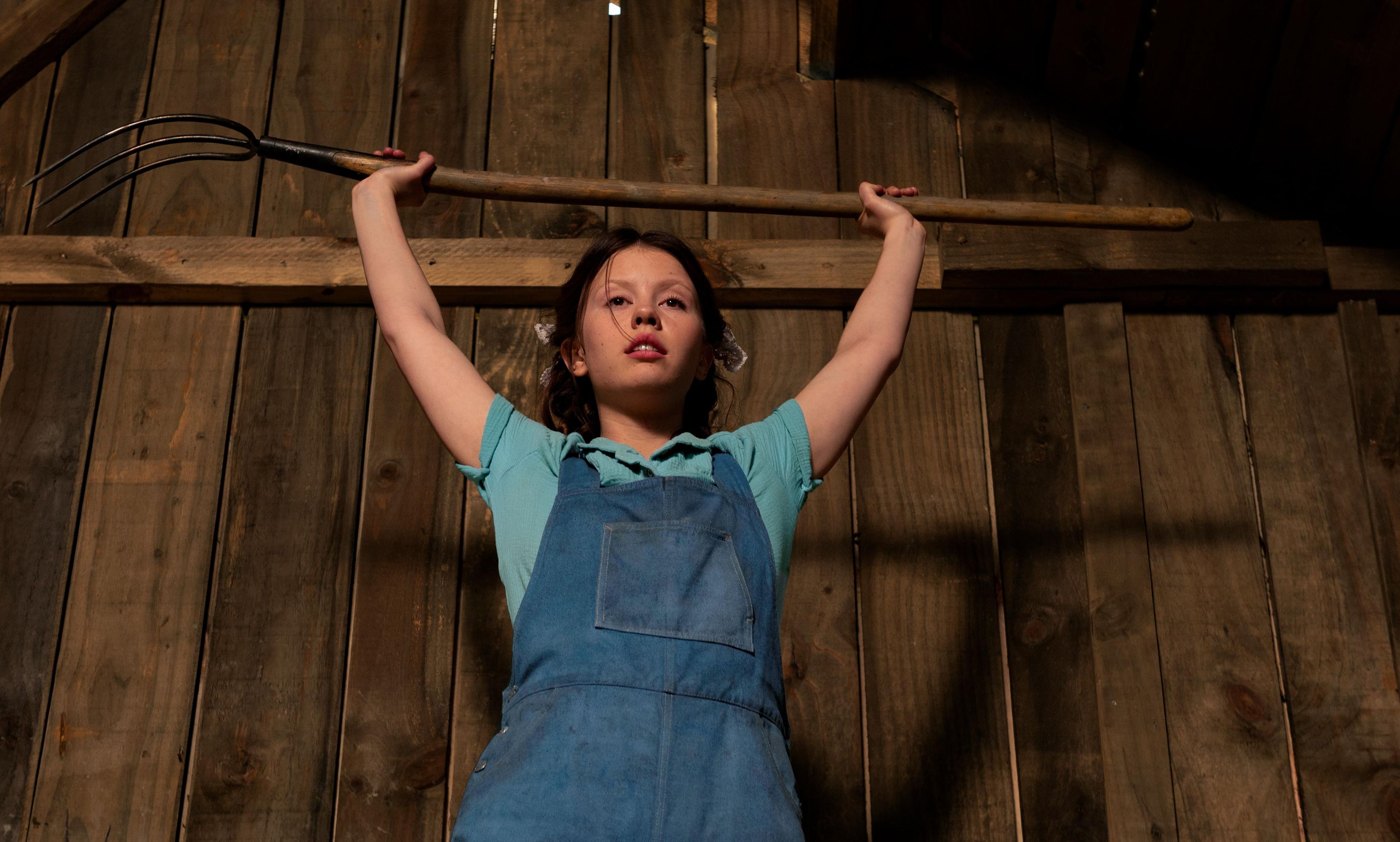
Cregger: I’m writing the movie that you think you’re watching where [Bill Skarsgard’s Keith] is the bad guy, obviously, and he’s got some ulterior plan going. And then once they were in the tunnels and it was time for him to do whatever he was going to do, I just had this realization like, “There’s nothing that I could write here that will be satisfying because we’ve seen this coming from Page 1.” The moment he opens the door, we know what this is. And so whether he sticks [Georgina Campbell’s Tess] with a needle or throws her in a cage, I was just like, “This has all been preordained, and I hate it.” I was just so frustrated. And then I was just like, “Fuck it, a giant naked lady comes out and smashes his head.” And in that moment, it was like, “Well, that’s cool. Now I like it.”
Okuno: I love that Zach wrote it with a red light on. Setting the mood. I should have done that.
Cregger: My whole attitude when writing is to try and get my conscious brain out of it and just let my subconscious go. This is just what came out of me.
West: I don’t sit down and go, “OK, I have an idea for a movie, and it’s about this and I need to get this message across.” I’m just like, “Here is what young sex, drugs, and rock ’n’ roll people will be like contrasted with people from another generation who are no longer at that party.” And usually in horror movies, the young people are being punished for doing that because the old people are judging them, and I just thought, “Well, a more interesting approach would be that the old people are jealous and angry. They’re envious of it rather than puritanical about it.” That just felt like a fresh take.
Bettinelli-Olpin: If it feels like we’re going for the joke, we usually cut it. If it feels like we’re going for a message, we usually cut it.
Gillett: You shoot the scariest version and you shoot the funniest version, and then you can figure out the balance in post. You want to make sure that the characters are never aware if they’re in a comedy or a horror movie.
Cregger: Comedy, horror: two sides of the same coin. They’re both about eliciting a visceral response through tone and timing. It’s all about the pace and the zigging when they expect you to zag. I think of my time in comedy as going to the gym and working out almost the exact same muscle group [as horror].
Okuno: You have to embrace the fact that you’re doing a suspense thriller, and you need to go for things that just scare you—you don’t have to intellectualize it. You’re drawing upon your own experience and your own fears, and that’s less heady and just instinctual.
Part 3: “People Are Really Craving That.”
Maybe more than any other genre, horror relies on word of mouth. For the directors of some of 2022’s best scary movies, screening them was a nerve-racking experience, but witnessing audiences latch on to their films made it worth it.
Okuno: From the very beginning, we’re always chasing the high of that test screening. For whatever reason, just vocally, our test screening was so loud. It was the best screening I’ve ever experienced, and it was a really early cut of the movie without any final effects, without the final score. I don’t know if it was just that we had a really good audience. It may have been because it was that moment in the pandemic where people were just starting to come back and get into theaters after having not had that experience for a really long time. People were just primed to watch a fun horror movie.
Gillett: We had a pretty weird preview process with that movie because it was still in the height of COVID. Our first preview was via Zoom, which is not an experience we ever want to have again.
Bettinelli-Olpin: You can’t read body language.
Gillett: Then we ended up doing an actual in-person preview with an audience in San Antonio. And I think that for us, there was this real sigh of relief because it felt like, “Fuck yeah, we’re finally showing the movie in the context that it was created to be seen in, and people are responding to it.”
West: [X] tested terribly. Credit to A24. A24 does not rely heavily on testing. They use testing to get a gauge of things. It is a resource for me if it points out anything that feels weak in the movie. So they weren’t particularly concerned about it. Horror usually does not test very well, and particularly, indie horror tests even worse than that. But then to turn around and have [the premiere at] South by [Southwest] be the success that it was, and the release of the movie received the way it was, is weird. Sometimes you can ignore testing and it’s fine.
Cregger: Coming from comedy, you can cut a funny video together in a room with your friends and be pretty sure how it’s going to play. But it’s not until you show it to a room of people that you get that feedback that is undeniable. They say audiences are idiots in the individual and geniuses in the collective. I totally believe that.
West: I will add, Pearl actually tested very well.
Finn: You’re 12 or 13 weeks into post, the movie’s still held together by Scotch tape, and it’s an incredibly stressful situation. We did our first test screening at the Burbank AMC in front of a packed house. And what was really interesting was there was no marketing or anything out there about the movie at that point. Nobody even knew the movie had been made. Nobody knew who I was. Nobody really knew who Sosie [Bacon] was. It was just this thing that came out of nowhere. I remember that first time that we cut to Laura’s very first smile, this shock wave that went through the audience was so intense. My editor was sitting next to me, and he leaned over like, “Oh shit, dude, we got them.”
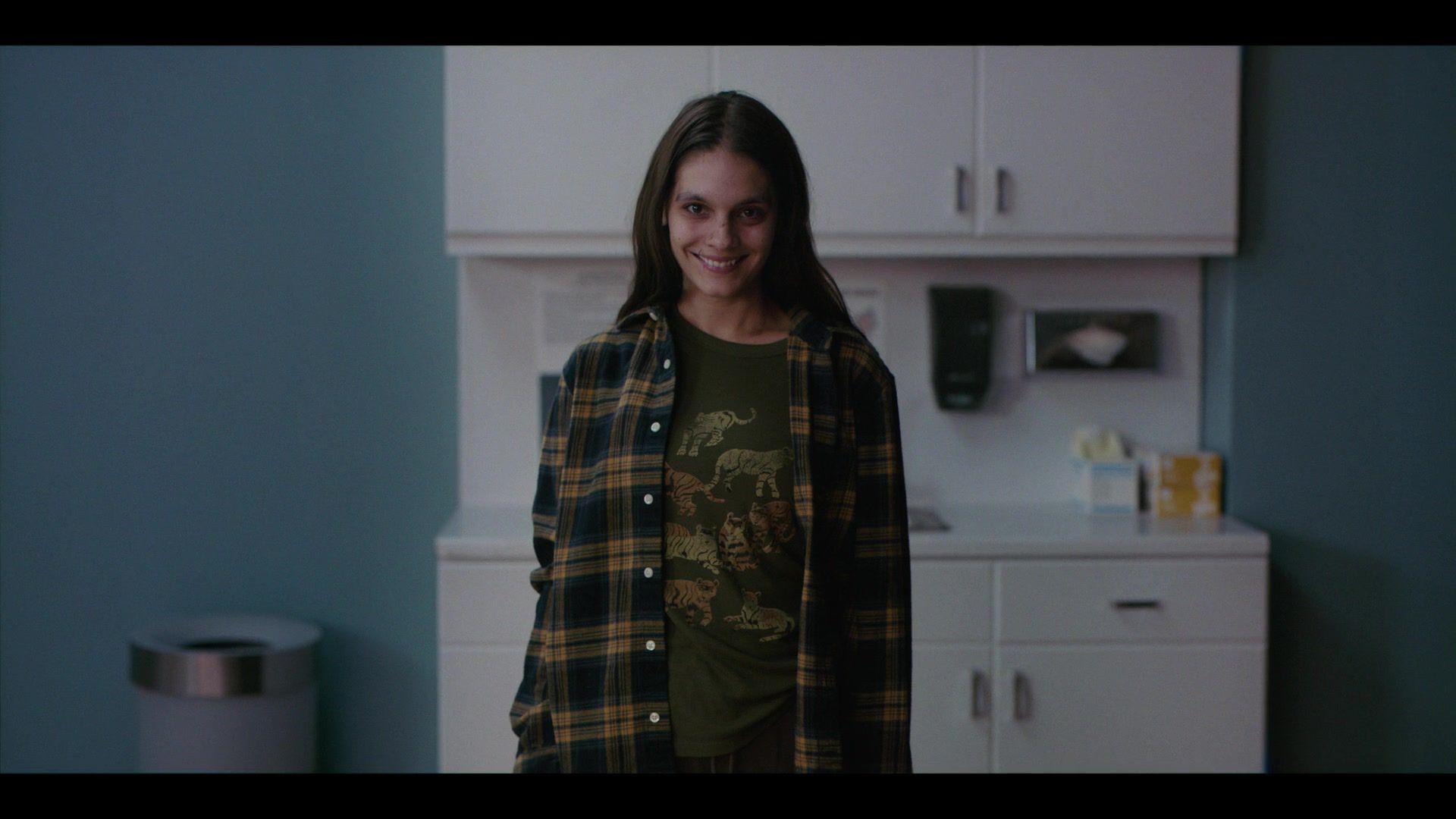
Cregger: All these crazy turns of events happened. Our financier died, and we got saved at the 11th hour by New Regency. And then through that fluke, we had a studio attached. And then we cut the movie together, and it seemed like it worked. And then they did a test screening, which they didn’t have to do. Those things aren’t cheap.
Finn: You could feel it. The audience was really interacting with what was going on and screaming and laughing and shouting and all this stuff. It was amazing. The scores came in very high, and that was the genesis of how the movie shifted from streaming to theatrical. It got everybody to look at it differently.
Cregger: Disney came to the test screening, and then boom: Here we go. And so for it to have had this wide theatrical release feels completely out of the blue. And then for it to have gotten this great reaction, it’s just so surreal and so fun.
Finn: I got a call from the head of creative advertising at Paramount, and he’s like, “Hey, man, we’ve got an idea.” He’s like, “Top Gun comes out next week. We’re going to put a teaser on it.” But because Top Gun is a four-quadrant family-friendly thing, we have to think outside of the box of what we could actually make as a teaser. It’s a thing where Rose is walking down the hall, and her patient Carl is in the room smiling. And she goes in there, snaps her fingers in front of his face, and it’s basically just a title reveal of the film. And they didn’t put it online, either, so it only happened in theaters. And then I remember seeing all this chatter on the internet where people are like, “Did I have a fever dream?”
West: You can make horror movies for less money, and then because they’re often concept driven and entertainment factor driven, it’s not that hard to market them.
Finn: I get invited into these marketing meetings probably mostly as a courtesy, to be honest. But they were spitballing a lot of ideas, and one of the ones that had come up was trying to do something very guerrilla: “We’re going to target some seats at some sporting events that are right where the camera is pointing and hire some actors to [smile].” Paramount didn’t want to be like, “Hey, did you see that at the game?” They were just hoping that it would organically get noticed. And we were down in Austin because we had done the world premiere of the film at Fantastic Fest on Thursday night, and Friday night was when that all started blowing up with the MLB games. And man, that one game when the camera just locked in on that woman and then the announcers commented on it and then it exploded on the internet? It was amazing because it was a huge amount of marketing that they spent nothing on. The cost of a seat and an actor.
Cregger: They didn’t really put a P&A into this thing. It really was a word-of-mouth thing. And that is so gratifying to me. That first Friday when they lifted the embargo on Rotten Tomatoes and I saw the feedback was positive, I was so happy. And then I don’t know what to make of box office return. The movie made 10 and a half [million] the opening weekend, and people were calling me like, “That’s so great!” And I’m like, “I have no idea. Is that good?” It was clearly getting a lot of positive attention, but since it went to HBO Max, it has been a whole different animal.
Okuno: I’ve literally been doing this since I was 18 years old. I am now 35. And only now, I’ve actually managed to make the feature and get it seen by people. I mean, it’s been incredible and overwhelming. Honestly, in a lot of ways, it’s the coolest year of my life.
West: There really hasn’t been much time to process it, other than just the experiences themselves. But everything from South by with X to Venice has been very surreal. It’s been two movies at once with the third movie on deck. I’ve just never been this busy before. That’s a good way to handle it because then it’s just one foot in front of the other.
Bettinelli-Olpin: It’s been nonstop Ghostface all year.
Gillett: I think we keep forgetting that the movie came out this year.
Bettinelli-Olpin: It was so exciting to have a year where you’re like, “Oh my gosh, these are all great movies.” It’s not like there’s two or three.
Gillett: Such a fucking good year. I mean, Nope, Barbarian, Smile, Watcher.
West: So much of the year I was busy posting two movies at the same time, so a lot of movies came and went. And realistically, sadly, I’ll probably catch up with a lot of them at home. I made a little list in my phone. It’s very long.
Cregger: I thought Ti crushed it with X and Pearl. The first two acts of Speak No Evil, that’s the most tense, wonderful thing ever. I love the first 50 minutes of that movie deeply.
Bettinelli-Olpin: I watched Watcher and Nope and Black Phone within a week of each other, and all were wildly different experiences, all super original. Watcher is one of the best not-Hitchcock Hitchcock movies I’ve seen in fucking so long.
Finn: I was so impressed by what Jordan did with Nope. The craft inside of that film is breathtaking.
Okuno: How they shot those night scenes with infrared cameras. Basically, Jordan and his DP invented this new way of shooting night photography. It looks amazing.
Bettinelli-Olpin: One of the fun things about Nope is that every single person I talk to interprets that differently, and that is so rad that we can all go to a movie that affects us so much that we all want to talk about what we got out of it.
Okuno: I really, really enjoyed Prey quite a bit. I don’t know if people would consider that horror or an action movie, but it’s a little bit of everything. Just conceptually, taking the Predator movie and setting it in this early American time period, making it about this Native girl, was brilliant.
Cregger: It’s so varied. It’s like, Terrifier 2 and Nope feel like two opposite ends of the spectrum. And maybe Nope’s not a horror movie. I don’t know if it is or it isn’t. But I think there’s horror elements in that. But it couldn’t be farther from Terrifier 2. And then there’s the whole spectrum in between. I don’t know where Barbarian falls on that spectrum, and Smile and X. But I love that [the genre is] not pigeonholed.
Gillett: The horror genre is the best way to amplify all of that terror and make it digestible and make it feel safe and explored in a way that you can leave the theater after watching the most brutal thing and feel OK about being alive. I think we’re in a weird point in our history where it feels like people are really craving that more than they have in a long time.
Finn: If I can tear that scab open for people and make them recognize certain elements of themselves and their lives in something that makes them feel uncomfortable, I love that. That, for me, is really fun.
Interviews have been edited and condensed.
